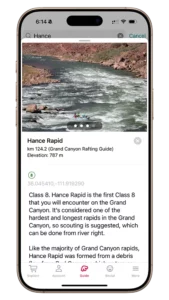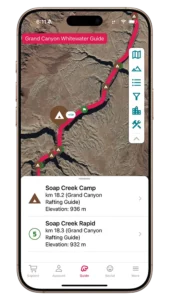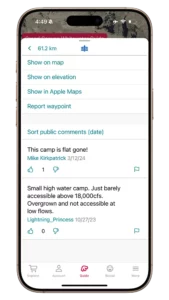About House Rock Rapid
House Rock Rapid is considered the first significant rapid of the Grand Canyon. The scout is located on river left, with an easy to follow path leading you down to the rapid. House Rock Rapid is formed from debris flow from House Rock Wash, a tributary that enters on river right. It’s estimated that the most recent debris flow occurred in 1966, which is also the time frame that elevated this rapid from not-such-a-big-deal to big deal. In the Boatman’s Quarterly Review, conservationist and outfitter, Martin Litton describes the event:
“Of course a lot of people don’t remember that the year Crystal was formed so was House Rock. House Rock used to be just a little tiddly sort of thing until that fan pushed it all over on the left side, same as Crystal, right up against those cliffs. You never had any trouble. It was a straight shot…so that was a big year for…that rain fell, what? 15 inches in some few hours up on the plateau. Tore out everything along Bright Angel Creek, too. That was a big year…1966.”How to run House Rock Rapid
The constriction of House Rock Wash pushes most of the water towards the left into large, turbulent waves and holes. With the largest of these waves and holes being towards the bottom of the rapid. A good run starts on the right side of the entrance tongue, pulling right, with a 90 degree angle to the current. Keep your momentum going through the right side of the tongue and work your way down along the right side of the rapid. The rapid is shallow on the right, so it is important not to dip your oars too deep to avoid popping one. Going too far right can lead to boats getting spun or stuck on the rocks, so don’t over do it. Keep calm, hold your angle, and you will be fine. If you end up in the main channel you’ll want to run the big stuff straight. If you want to camp at House Rock Camp, get ready to pull hard to the right out of the tail waves of the rapid.








